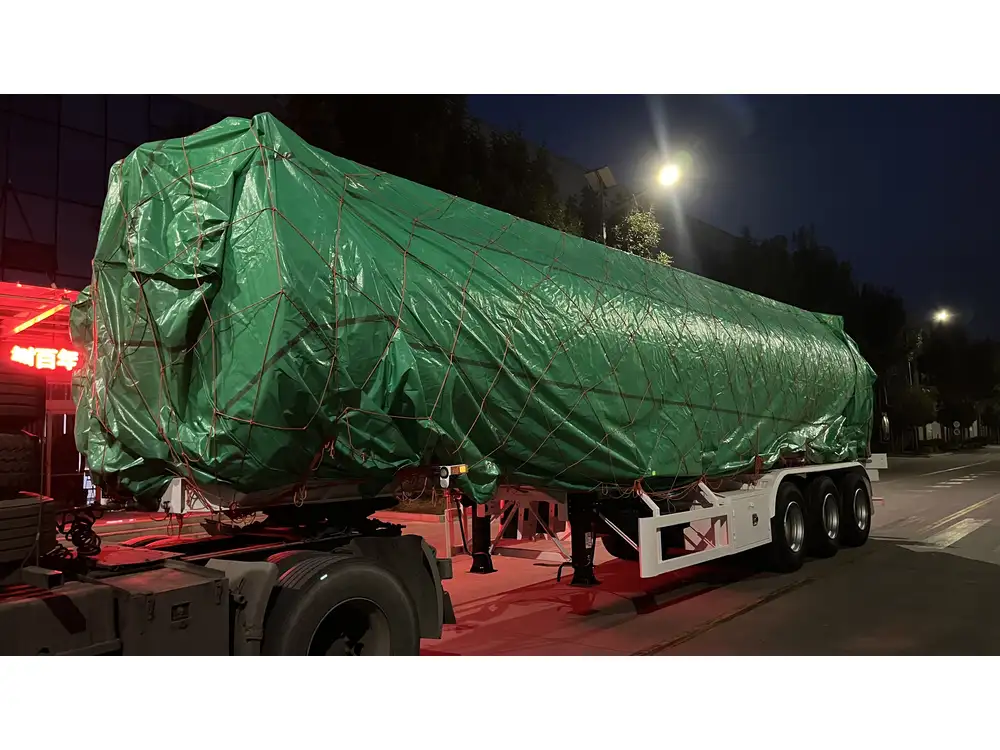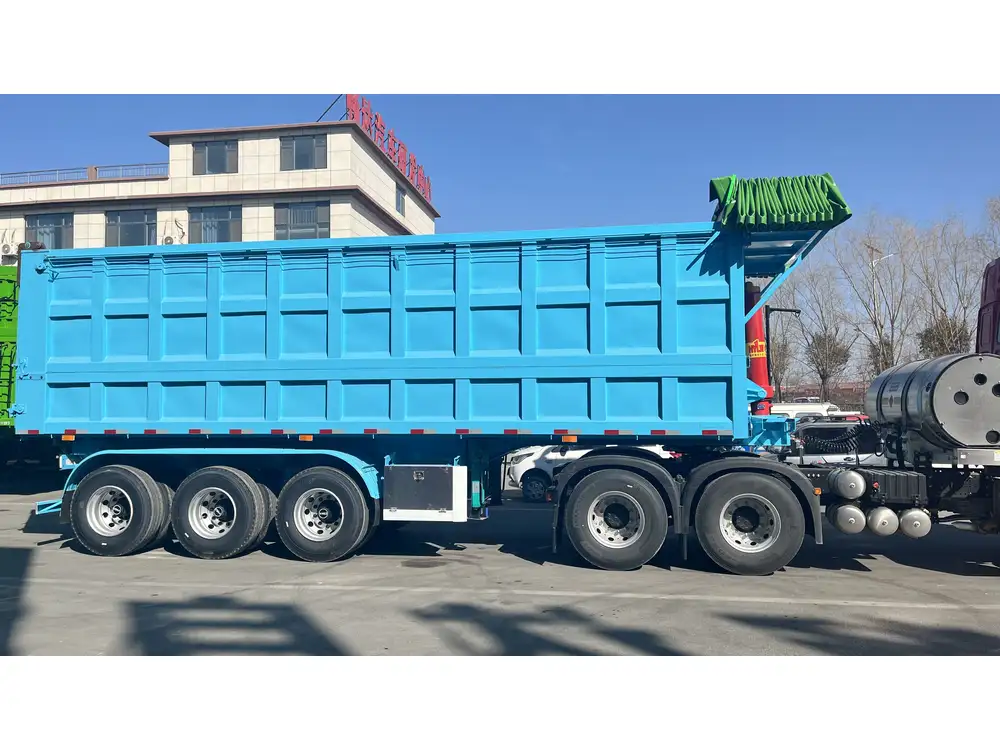Skeletal trailers represent a critical segment in the logistics and transportation industries, known for their versatility and efficiency in moving cargo, especially containerized goods. In this extensive guide, we aim to provide a detailed analysis of skeletal trailer weight — a key factor influencing operational efficiency, regulatory compliance, and overall business profitability.
What is a Skeletal Trailer?
A skeletal trailer is designed primarily for transporting cargo containers. These trailers feature a minimalistic design, typically consisting of a flat structure that includes chassis and wheels, and may not have complete side panels or roofs. This design allows for enhanced maneuverability and ease in loading and unloading containers, making them ideal for intermodal transportation.
Key Features of Skeletal Trailers
| Feature | Description |
|---|---|
| Design | Open structure, designed for quick loading/unloading |
| Capacity | Typically accommodates 20′, 40′, or 45′ containers |
| Material | Constructed from high-strength steel or aluminum |
| Weight | Light-weight, optimizing payload capacity |
| Versatility | Suitable for various types of container transport |

Importance of Understanding Skeletal Trailer Weight
The weight of a skeletal trailer is critical for several reasons:
- Payload Capacity: Knowing the weight helps in maximizing the payload without exceeding limits.
- Regulatory Compliance: It is essential to adhere to local and international weight regulations to avoid fines and penalties.
- Fuel Efficiency: Lighter trailers can enhance fuel efficiency, reducing operational costs.
- Durability: Understanding the weight distribution contributes to the longevity of the trailer and overall safety during transportation.
Standard Weights of Skeletal Trailers
To get into specifics, the weight of skeletal trailers varies based on design specifications and manufacturer models. On average:
- Empty Weight: The average empty weight of a skeletal trailer typically ranges from 3,000 to 5,500 pounds (1,361 to 2,494 kg).
- Maximum Gross Vehicle Weight Rating (GVWR): Most skeletal trailers can support a GVWR of 40,000 to 80,000 pounds (18,144 to 36,287 kg), contingent upon local regulations.
Factors Affecting Skeletal Trailer Weight
Several factors dictate the weight of a skeletal trailer, each contributing significantly to the operational metrics of the transportation process:
| Factor | Influence on Weight |
|---|---|
| Materials Used | The choice between steel or aluminum alters weight significantly. |
| Tire Specifications | Larger tires can increase weight but improve load capacity. |
| Design Variation | Enhanced designs with additional features (e.g., reinforced structures) can increase overall weight. |
| Technology Integration | Advanced tracking and safety technology add marginal weight but provide substantial benefits. |

Weight Regulation and Compliance
Adherence to weight regulations is non-negotiable in the transportation industry. Non-compliance can lead to severe financial penalties and operational disruptions. Different jurisdictions—both local and international—have varying regulations, including:
- Maximum Allowable Weight: Review of limits set by local transport authorities.
- Bridge Formula: Ensures that vehicle configurations do not exceed specified weight limits on bridges.
Ensuring Compliance
| Strategy | Implementation |
|---|---|
| Weight Checks | Regular inspections before trips to verify compliance. |
| Design Choices | Selecting models that adhere to local regulations. |
| Training | Educating drivers and operators on weight regulations. |
Calculating Payload Capacity
To effectively calculate the payload capacity of a skeletal trailer, individuals must consider both the trailer’s weight and the applicable weight limits. The formula is:

Payload Capacity Formula
[ \text{Payload Capacity} = \text{GVWR} – \text{Trailer Weight} ]Example Calculation
Assuming a skeletal trailer with:
- GVWR: 60,000 lbs
- Empty Weight: 4,000 lbs
Calculation:
[ \text{Payload Capacity} = 60,000 \text{ lbs} – 4,000 \text{ lbs} = 56,000 \text{ lbs} ]
This calculation demonstrates the operational effectiveness of skeletal trailers, optimizing logistic operations by allowing for heavier loads.
Tips for Maximizing Efficiency
To enhance operational efficiency with skeletal trailers, companies should adopt the following strategies:
- Regular Maintenance: Ensure that trailer components are in optimal condition.
- Weight Distribution: Proper load distribution can minimize wear and tear and enhance stability.
- Advancements in Technology: Adopt technology solutions for weight monitoring and management.

Balanced Load Distribution
Proper load distribution on a skeletal trailer is crucial for safety and legal compliance. Load should ideally be distributed as follows:
| Load Position | Recommended Distribution |
|---|---|
| Front of Trailer | 30% of total weight |
| Center of Trailer | 40% of total weight |
| Rear of Trailer | 30% of total weight |
Troubleshooting Common Weight Issues
Weight-related issues can hinder operational efficiency, leading to inflated costs and compliance headaches. Here are some common problems and their solutions:
| Issue | Description | Suggested Solution |
|---|---|---|
| Overweight Loads | Exceeding legal weight limits | Implement a strict weight-check process. |
| Uneven Weight Distribution | Causes instability and potential accidents | Conduct regular load distribution checks. |
| Insufficient Payload Capacity | Limits business operations | Consider investing in higher capacity models. |
Emerging Trends in Skeletal Trailer Design
As the transport industry evolves, skeletal trailers are also undergoing significant advancements. Notably:
- Lightweight Materials: Manufacturers are increasingly focusing on using lightweight materials, such as advanced composites, to optimize efficiency.
- Smart Trailers: Integration of IoT technology enables real-time monitoring of weight and operational metrics, enhancing both compliance and performance.

Conclusion
Understanding skeletal trailer weight is paramount for optimizing transportation efficiency, ensuring regulatory compliance, and maximizing profitability. Through diligent weight management and design considerations, businesses can navigate the complexities of the transport industry with greater success. As regulations continue to tighten and customer demands evolve, staying informed on innovations in trailer design and operational best practices will provide a competitive advantage, ensuring sustained growth and success in the logistics and transportation sectors.



